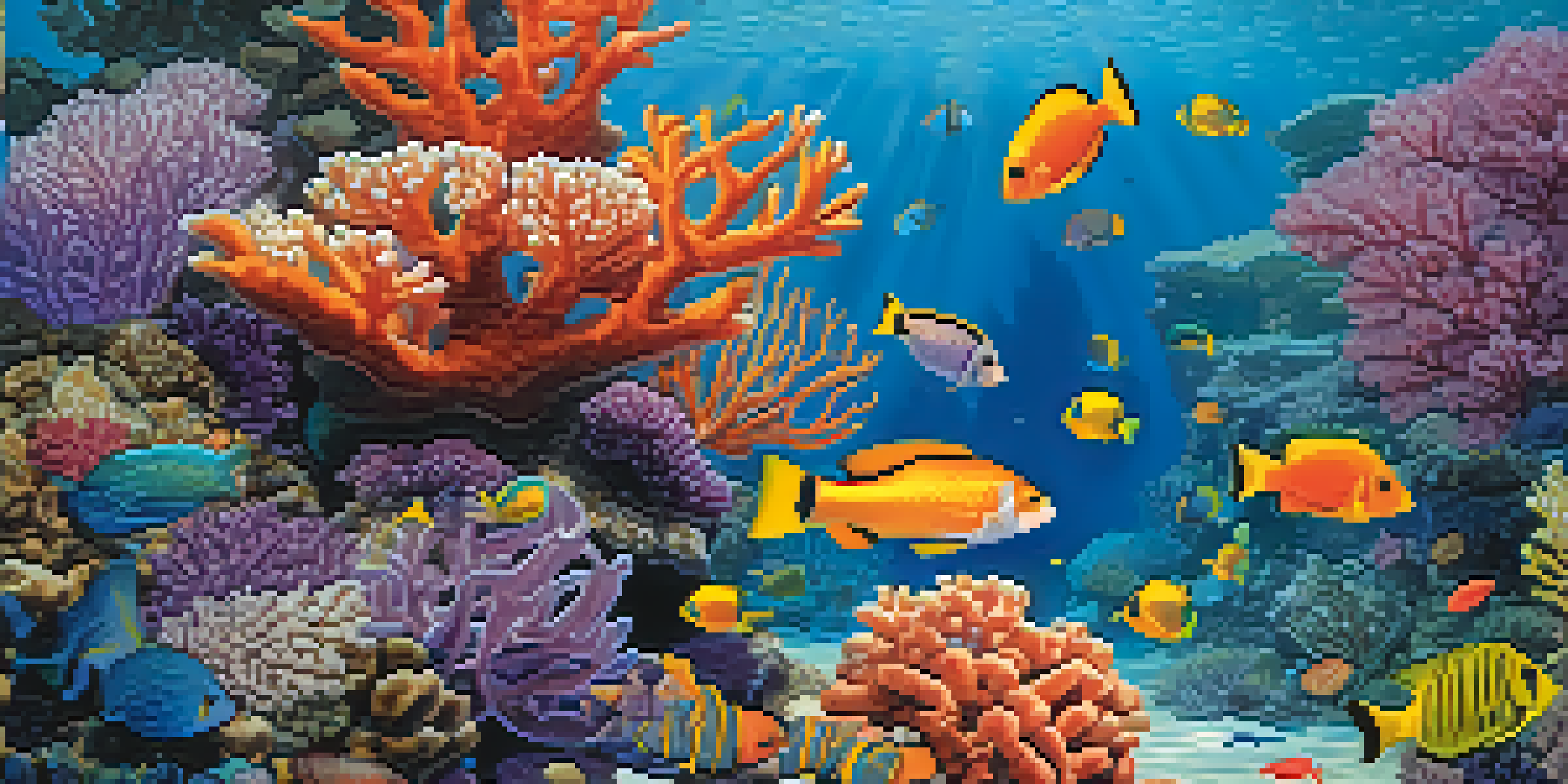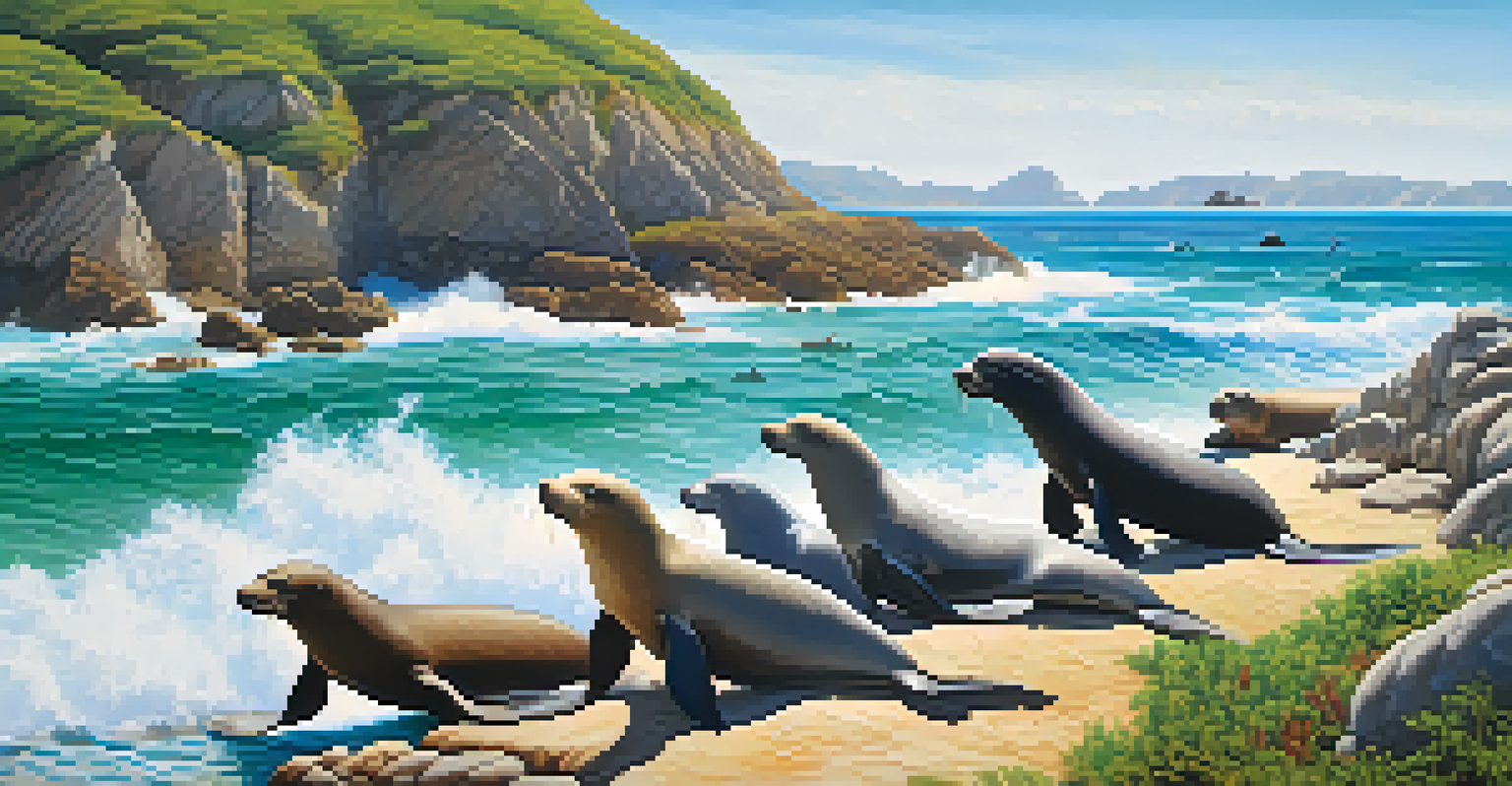The Rich Marine Life of Peru's Coastal Waters

Introduction to Peru's Coastal Marine Ecosystem
Peru's coastal waters are a vibrant tapestry of marine life, teeming with species that thrive in this unique ecosystem. Bounded by the Pacific Ocean, these waters boast an array of habitats, from rocky shorelines to sandy beaches and deep ocean depths. With its diverse geography and climate, Peru provides a sanctuary for countless marine organisms, making it a hotspot for biodiversity.
The greatest threat to our planet is the belief that someone else will save it.
The Humboldt Current, a major oceanic current, plays a crucial role in shaping the marine environment along Peru's coast. This cold water current brings nutrient-rich waters that support a flourishing food web, enabling a variety of fish, mammals, and invertebrates to thrive. As a result, the coastal region has become an essential fishing ground, not just for local communities but for international markets as well.
Understanding this ecosystem is vital for conservation efforts and sustainable fishing practices. As we delve deeper into the marine life of Peru, we will uncover the fascinating species that inhabit these waters and the challenges they face in an ever-changing environment.
The Incredible Diversity of Fish Species
Peru's coastal waters are home to an astonishing variety of fish species, from the colorful parrotfish to the elusive hammerhead shark. These waters serve as a vital habitat for approximately 2,000 species of fish, many of which are economically important. Species like anchoveta, a small fish, play a crucial role in the global fishing industry and are a staple in the diets of many Peruvians.

In addition to commercially significant fish, the region also hosts unique species found nowhere else on Earth. For instance, the Peruvian booby, a seabird that feeds on fish, relies on these waters for survival, showcasing the interconnectedness of marine life. The diversity of fish not only attracts anglers and ecotourists but also supports local communities that depend on fishing for their livelihoods.
Biodiversity Thrives in Peru's Waters
Peru's coastal marine ecosystem supports a vast array of fish, mammals, and invertebrates, making it a hotspot for biodiversity.
However, overfishing and climate change pose significant threats to these fish populations. Efforts to manage and protect these species are essential to ensure the sustainability of Peru's marine ecosystem for generations to come.
Vibrant Marine Mammals of the Region
The coastal waters of Peru are also a haven for marine mammals, including sea lions, dolphins, and even the occasional whale. Species like the South American sea lion are commonly seen basking on the shores, while playful dolphins can often be spotted riding the waves. These mammals are not just cute; they play essential roles in maintaining the health of marine ecosystems.
In every walk with nature, one receives far more than he seeks.
Whales, such as the humpback and gray whale, migrate to these waters during specific seasons, making them a popular sight for whale watchers. This migration is not just a spectacle; it highlights the importance of these waters as breeding and feeding grounds. Observing these majestic creatures is a reminder of the rich biodiversity that thrives beneath the surface.
Unfortunately, marine mammals face threats from human activities, such as pollution and habitat destruction. Protecting their habitats and ensuring clean waters is vital for their survival and the overall health of the marine environment.
Colorful Coral Reefs and Their Importance
While Peru is not as famous for its coral reefs as other regions, it still boasts important coral ecosystems that contribute to marine biodiversity. These reefs provide shelter and breeding grounds for numerous fish species and invertebrates. The intricate structures of coral not only enhance the beauty of the underwater landscape but also play a crucial role in maintaining ecological balance.
Coral reefs are often referred to as the 'rainforests of the sea' due to their rich biodiversity. They support a wide range of marine life, from tiny clownfish to large predators like groupers. The health of these reefs is directly linked to the overall health of marine ecosystems, making their conservation a priority.
Cultural Ties to Marine Life
The rich marine life of Peru is deeply intertwined with local culture, influencing traditional fishing practices and culinary traditions.
However, coral reefs face significant threats from climate change, ocean acidification, and pollution. Protecting these underwater treasures is essential for preserving the rich marine life they support and ensuring the resilience of the coastal ecosystem.
The Role of Coastal Habitats: Mangroves and Estuaries
Coastal habitats like mangroves and estuaries are essential components of Peru's marine ecosystem. These areas serve as nurseries for many fish species, providing shelter and abundant food sources for young marine life. Mangroves, in particular, are incredibly productive ecosystems that act as buffers against coastal erosion and protect against storm surges.
Estuaries, where freshwater meets saltwater, are rich in nutrients and support a diverse range of species. They serve as critical feeding and breeding grounds for fish, birds, and other wildlife. The intermingling of different water types creates a unique environment that fosters biodiversity and supports local fisheries.
However, human activities like urban development and pollution threaten these vital coastal habitats. Protecting and restoring these areas is crucial for sustaining the rich marine life of Peru's coastal waters and the communities that depend on them.
Cultural Significance of Marine Life in Peru
Marine life holds immense cultural significance for the people of Peru. For centuries, fishing has been a way of life for coastal communities, providing sustenance and economic stability. Traditional fishing practices are deeply rooted in the culture, and many communities celebrate their connection to the sea through festivals and rituals.
The rich variety of marine species also influences Peruvian cuisine, which is renowned for its seafood dishes. From ceviche to grilled fish, the flavors of the ocean are integral to the country's culinary identity. This connection to marine life fosters a sense of pride and stewardship among locals, highlighting the importance of sustainable practices.
Conservation Efforts are Crucial
Sustainable fishing practices and the establishment of marine protected areas are essential for preserving Peru's marine ecosystems and their biodiversity.
However, as industrial fishing expands and environmental challenges increase, maintaining this cultural connection becomes more difficult. Education and awareness are key to ensuring that future generations can continue to enjoy and respect the rich marine resources that define their heritage.
Conservation Efforts and Future of Marine Life
As awareness of the importance of Peru's marine life grows, so do conservation efforts aimed at protecting these vital ecosystems. Local communities, government agencies, and NGOs are working together to promote sustainable fishing practices and protect critical habitats. These initiatives are essential for preserving the rich biodiversity that characterizes Peru's coastal waters.
Marine protected areas (MPAs) have been established to safeguard vulnerable species and habitats. These designated zones allow ecosystems to recover and flourish, creating a healthier marine environment. The success of these efforts relies on community involvement and collaboration to ensure that conservation practices are respected and upheld.

Looking ahead, the future of Peru's marine life hinges on our collective commitment to protecting these precious resources. By fostering a culture of sustainability and respect for the ocean, we can ensure that future generations can continue to marvel at the incredible marine diversity that Peru has to offer.